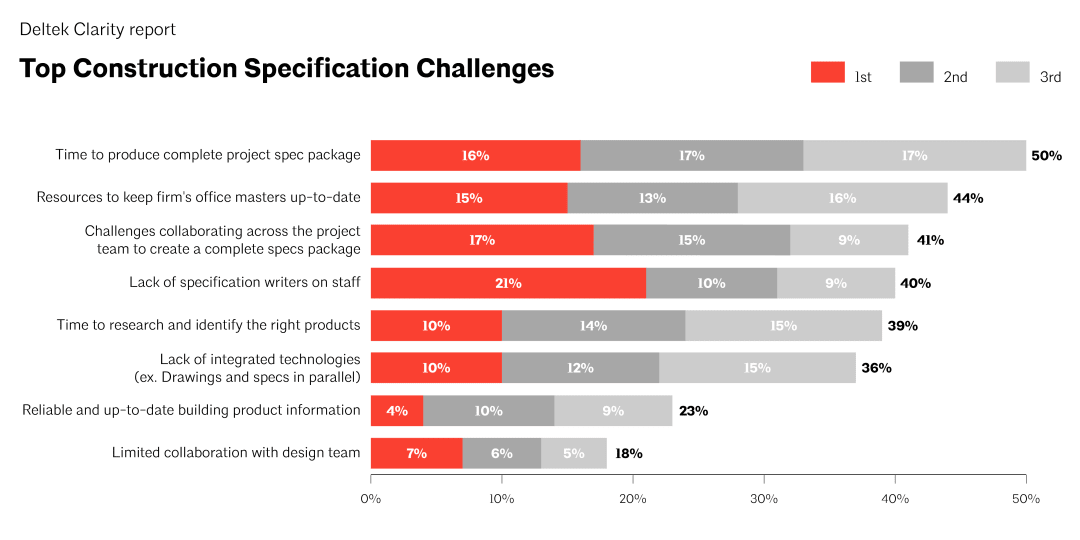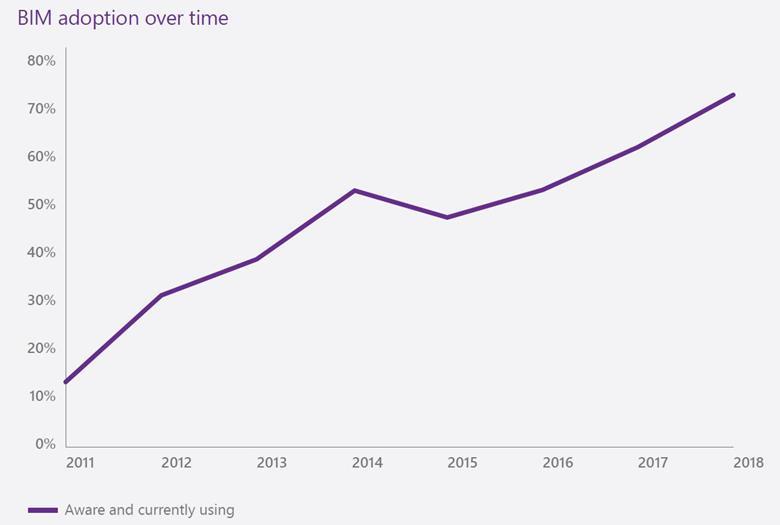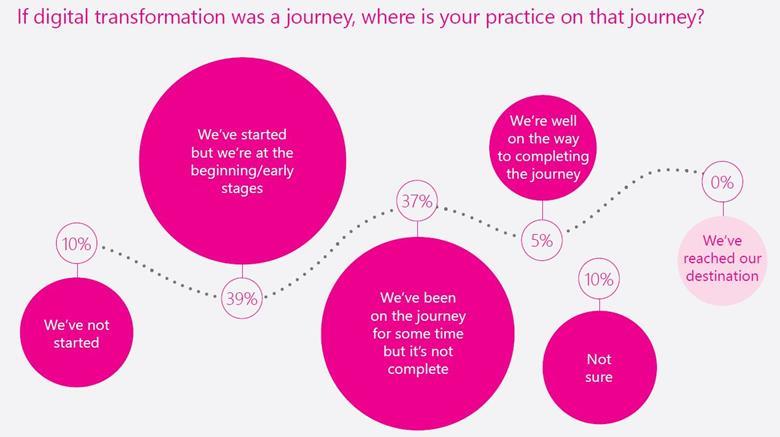Part
01
of two
Part
01
Challenges and Pain Points for Architects
Key Takeaways
- About 50% of architects agree that producing a complete project specification package is time-consuming.
- When asked about the digital transformation journey of their practice, only 5% of architects indicated that their practice was on its way to completion.
- Architects have lost clients to third-party competition and developers willing to finalize the procurement process without proper research and evaluation despite insufficient data leading to 14% of construction rework.
- Building material costs increased by 13% in 2021, with builders reporting record-high prices of timber, steel, and bricks up to 80%.
- Architects are under high pressure to deliver digital projects, with 85% of the indicating pressure and 41% citing high/extremely high pressure from their organization in 2019.
Introduction
This report identifies current challenges for architects with statistics from relevant organizations.
Time-Consuming Specification Process
- The process involved in describing the right materials to bring a design to fruition is a significant challenge for architects. Although the specification process is necessary, many architects find it boring and time-consuming.
- However, the specification process is critical to construction projects, as it reduces risk, and the project could fail without enough and the correct data regarding materials to use.
- About 26% of architects write out specifications from scratch, more than half of them (57%) copy and paste from previously used specifications, and 16% reuse the previously identified specs entirely.
- When consulting architects regarding the top challenges of the specification process, 50% indicated that it is time-consuming to produce a complete project specification package. In comparison, 39% said they found researching and identifying the right products for the project time-consuming.
Adopting New Technologies
- Several new technologies have replaced manual processes such as measuring, drawing, and project management, facilitating digital transformation in the architecture/construction industry.
- Although a more significant number of architects are leveraging digital processes such as Building Information Modeling (BIM), mobile, and immersive technology, adopting new technologies has led to other challenges.
- BIM has evolved to become a staple technology for architects. However, many professionals cited barriers to using BIM, such as the "cost associated with digital surveys required to make 3D models of existing structures" for refurbishment structures.
- About 69% of architects indicated cost as the primary challenge to adopting new technologies.
- When asked about the digital transformation journey of their practice, only 5% of architects indicated that their practice was on its way to completion.
Prioritizing Design Quality over Cheap Construction
- Architects face significant issues with prioritizing design quality due to industry preference for low-cost materials and speedy delivery.
- As indicated earlier, the specifications process is often time-consuming. Subsequently, architects have lost clients to third-party competition and developers willing to finalize the procurement process without proper research and evaluation despite insufficient data leading to 14% of construction rework.
- Land shortage and regulatory restrictions also contribute to the hastiness of clients for quick building solutions. Architects thus find it challenging to "carry their vision through value engineering and into the completed project."
- About 53% of US contractors indicated that time constraints and the need for hasty solutions are the most significant risk factors affecting decision-making.
Value Engineering
- The recent increase in the cost of building materials is diminishing the role of architects in construction.
- Although value engineering has been an issue in the construction industry for architects and constructors, supply chain constraints and rising material costs have shifted the final specification process to the general contractor overseeing a project instead of the architect.
- Building material costs increased by 13% in 2021, with builders reporting record-high prices of timber, steel, and bricks up to 80%.
- Considering that contractors need to meet client timelines and make product availability guarantees, "the role of architects has become idyllic more than concrete."
Pressure to Deliver Digital Projects
- Architects face significant pressure from their organizations to fulfill their digital transformation goals by delivering digital projects.
- About 68% of architects indicated problems with having the right technologies to facilitate this transformation, and 80% cited data challenges to leveraging mobile and IoT technologies.
- However, 78% of architects indicated that their organizations have moved beyond planning their digital transformation strategies to implementing them for project delivery.
- Subsequently, architects are under high pressure to deliver digital projects, with 85% of the indicating pressure and 41% citing high/extremely high pressure from their organization in 2019.
- During the pandemic, the demand for digital projects increased to 48% across the US, UK, France, and Germany. Roughly 13% of organizations are in the planning phase of digital transformation, compared to 22% in 2019.
- However, 86% of architects said COVID-19 made it more challenging to obtain the right technology.
Research Strategy
We analyzed industry reports and precompiled lists from websites such as Architizer and the American Institute of Architects (AIA) to provide current challenges for architects. We leveraged a global focus, providing the results of surveys across several countries to provide robust data showing the international relevance of the data. Furthermore, we used some reports beyond Wonder's typical two-year standard. However, we supported the information from older publications with more recent data to ensure that it is still relevant.



